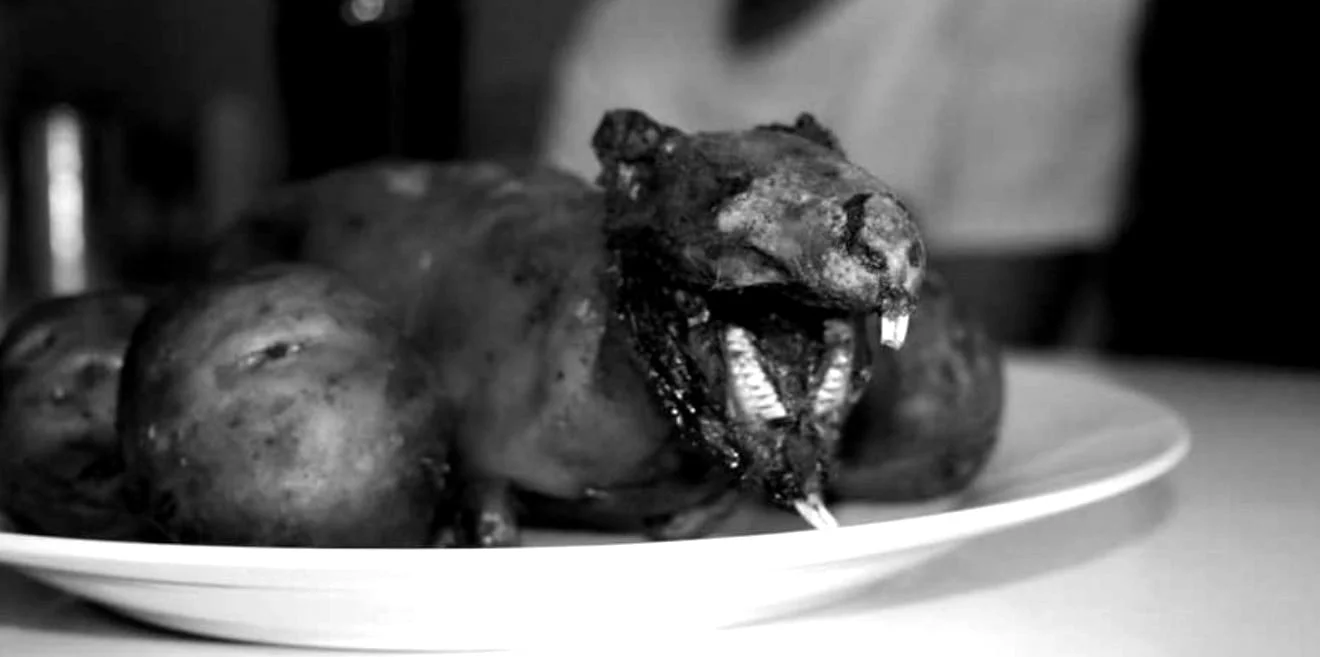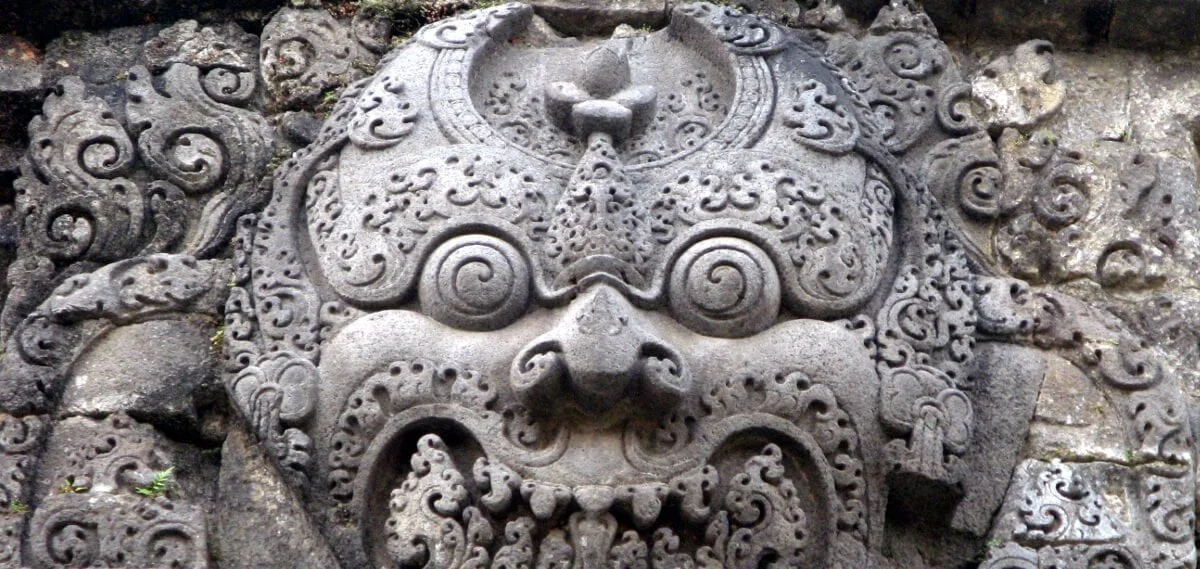Cuy, is part of the culture, history, mythology, folklore and every day life, of Peruvians from time immemorial. This small rodent is identified with the life and customs of the local communities, cuyes are also used in medicine and even in magical-religious rituals. The guinea pig in Peru it is a traditional food.
In this Article
ETYMOLOGY: CUY
According to legend, the name “cuy”, spelled COO-ee, came to being because of the sound the animal makes, “kwee, kwee”.
Borrowed possibly from Quechua quwi, jaca, quwe or akash, the Spanish word used in Ecuador, Peru, and Bolivia is cuy or cuyo (plural: cuyes, cuyos, curis, coris). Different spelling, like coy, kuwi, kuy, cui, ccoy, cuye, cobayo or conejillo de indias is used. Cuyito is a diminutive meaning little cuy.
The Aymara Indians of Bolivia call the rodent huancu, wanko, cuye, puquina or in Akaro, kiucho or uywa. In Bolivia, cuys are also called conejo cui (rabbit cuy), conejo peruano (Peruvian rabbit), or conejo nativo (native rabbit).
In southern Colombia, they are known as curi, cori, huimbo and jacaor huiro, in Venezuela as acurito, and in Cuba as curiel.
In some parts of the Andes of Peru, cuys are called by the Quechua name ofjaca (pronounced “haka”), aca, or sacca (in Junin), or quwi, cuwe or qowa (in Cuzco). Also jaca (Huánuco), aca (Ucayali), rucu (Cajamarca), kututo (Arequipa) and acash is used in parts of central and northern Peru.
Cavia porcellus

The scientific name is Cavia porcellus, with porcellus being Latin for “little pig”. Cavia is possibly derived from cabiai, the animal’s name in the language of the Galibi tribes once native to French Guiana. Cabiai may also be an adaptation of the Portuguese çavia (now savia), which is itself derived from the Tupi word saujá, meaning rat.
“Cavia Cutleri” or “Restless Cavy” is used because they sleep with their eyes open. These wild cavies live in family groups on grassland savannas and rocky outcrops.
Bishop Martínez Compañón [1782-85], who produced a multi-volume set of illustrations depicting life in eighteenth-century Peru, dedicated an entire volume to Peruvian fauna. Volume VI contains two illustrations of guinea pigs, on the right there is the domestic guinea pig or cui casero.
ETYMOLOGY: Guinea pig
Guinea
It does not come from Guinea and has nothing to do with a pig. The origin of the name by which they are commonly known, is a conundrum to the fancy that came up in the 1660s.
Perhaps so called either because it was brought back to Britain aboard Guinea-men, ships that plied the triangle trade between England, Guinea, and South America, or from its resemblance to the young of the Guinea-hog “river pig”, or from confusion of Guinea with the South American region of Guyana.
Some claim this name is the evolution of their remarkable resemblance to a small-sized pig, and the fact that in England, during the sixteenth and seventeenth centuries, cavies were sold for about a guinea (English coin) each. It is possible that in the every-day conversation of that time they became known as the pig that sold for a guinea, or, as we now know them, the guinea pig. This hypothesis is untenable, because the guinea was first struck in England in 1663, and William Harvey used the term “Ginny-pig” as early as 1653.
“Guinea” was also frequently used in English to refer generally to any far-off, unknown country, so the name may simply be a colorful reference to the animal’s exotic origins.
Others believe “guinea” may be an alteration of the word coney (rabbit); guinea pigs were referred to as “pig coneys” in Edward Topsell’s 1607 treatise on quadrupeds.
Pig
How the animals came to be called pig is not clear either. They are built somewhat like pigs, with large heads relative to their bodies, stout necks, and rounded rumps with no tail; some of its grunting noises are very similar to those made by pigs, and they spend a large amount of time eating.“Pig” may have come from the fact that when frightened the cuy makes a high-pitched noise like a swine. The swine analogy is furthered by the use of “boar” for the adult male guinea pig and “sow” for the adult female.
In 1789, Baltasar Jaime Martinez de Compatian, Bishop of Trujillo on the north coast of Peru, sent 24 boxes of animal, vegetable, mineral, and cultural specimens to King Charles III of Spain. According to his packing list, Box 18 included.
“Guinea pig, a type of rabbit, red male, tender meat and tasty. . . it is eaten roasted, fried, and stewed in different ways”
Compatian as cited in Schjellerup 1991
Guinea pig in other European languages
Other European languages fared little better in their attempts to name the animal accurately. In Dutch the English equivalent is used Guinees biggetje. In French cuy is rendered “pig of India” (cochon d’Inde) and in Portuguese and Italian “little pig of India” (porquinho da India and porcellino d’India), but in Spanish it is “little rabbit of the Indies” (conejillo de Indias). In German it is “little sea pig” (Meerschweinchen), and in Swedish “sea pig” (marsvin).
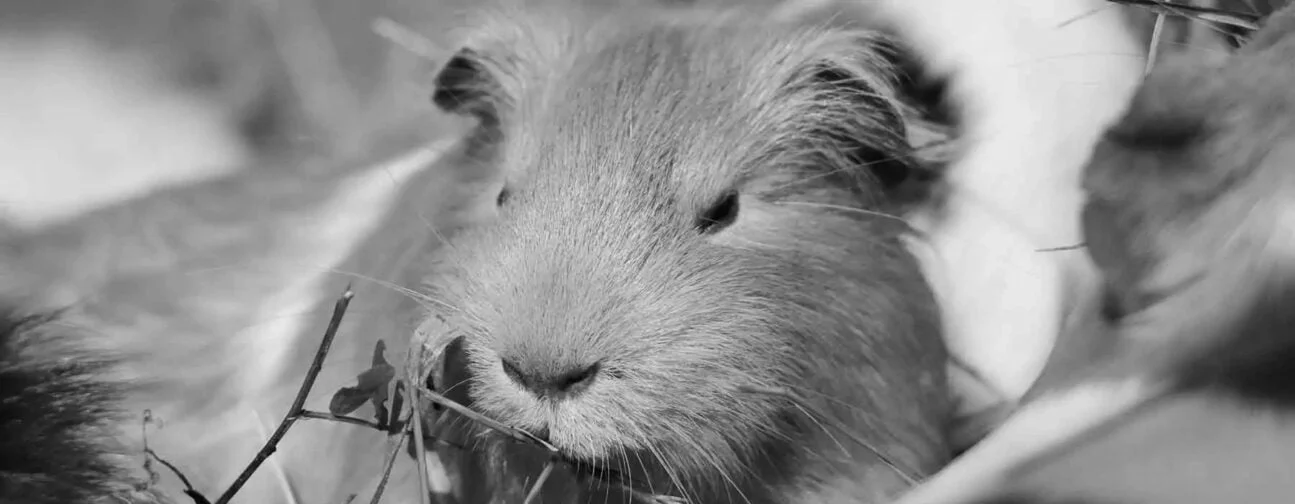
Pet guinea pig
Towards the end of the 17th century, Spanish, Dutch, and English traders introduced the guinea pig to Europe, where they became especially popular as an exotic pet.

Laboratory guinea pig
In the extended sense of “one subjected to an experiment” the guinea pig is first recorded 1920, because they were commonly used in medical experiments (by 1865). These furry rodents have served as vital subjects of medical research thanks to their biological similarities with humans. Beyond the fact that guinea pigs are mammals, its immune system and auditory structures also share similarities to those of humans, thus making research on hearing issues, allergens, and infectious diseases particularly feasible.

German physiologist Emil von Behring, won the 1901 Nobel Prize for his work with tetanus and diphtheria immunizations. The researchers, Behring together with his colleagues Wernicke and Frosch, immunized rats, guinea pigs and rabbits with attenuated forms of the infectious agents causing diphtheria and alternatively, tetanus.
German physician and microbiologist Robert Koch succeeded in identifying the tuberculosis bacillus in 1882 and the cholera bacillus in 1883. Guinea pigs were his preferred subjects, and used both to demonstrate the onset of a disease after inoculation, and recovery after the appropriate antitoxin had been administered. He also showed that the bacilli are airborne by pumping a spray through a pair of bellows into a pen in his garden containing guinea pigs, mice and rabbits – the animals duly sickened and died.
In 1905, he was awarded the Nobel Prize in Physiology and Medicine “for his investigations and discoveries in relation to tuberculosis”.

In 1907, vitamin C was discovered using guinea pigs (like humans they cannot produce the vitamin and need it supplied in their diet) and they have since contributed to 23 Nobel prizes for medicine or physiology. Guinea pig studies led to the discovery of the hormone adrenaline and helped develop replacement heart valves, blood transfusions, antibiotics and asthma medicines, as well as vaccines for diptheria and TB. Guinea pigs can experience an allergic reaction. This fact helped scientists learn more about asthma and anaphylactic shock.
The rapid growth of rat and mouse research between the 1930s and 1960s pushed the guinea pig to the margins of biomedicine. Cavia porcellus remains at the center of the debate over the value and ethics of animal experiments.
HISTORY & HERITAGE: Andean Cuy Culture
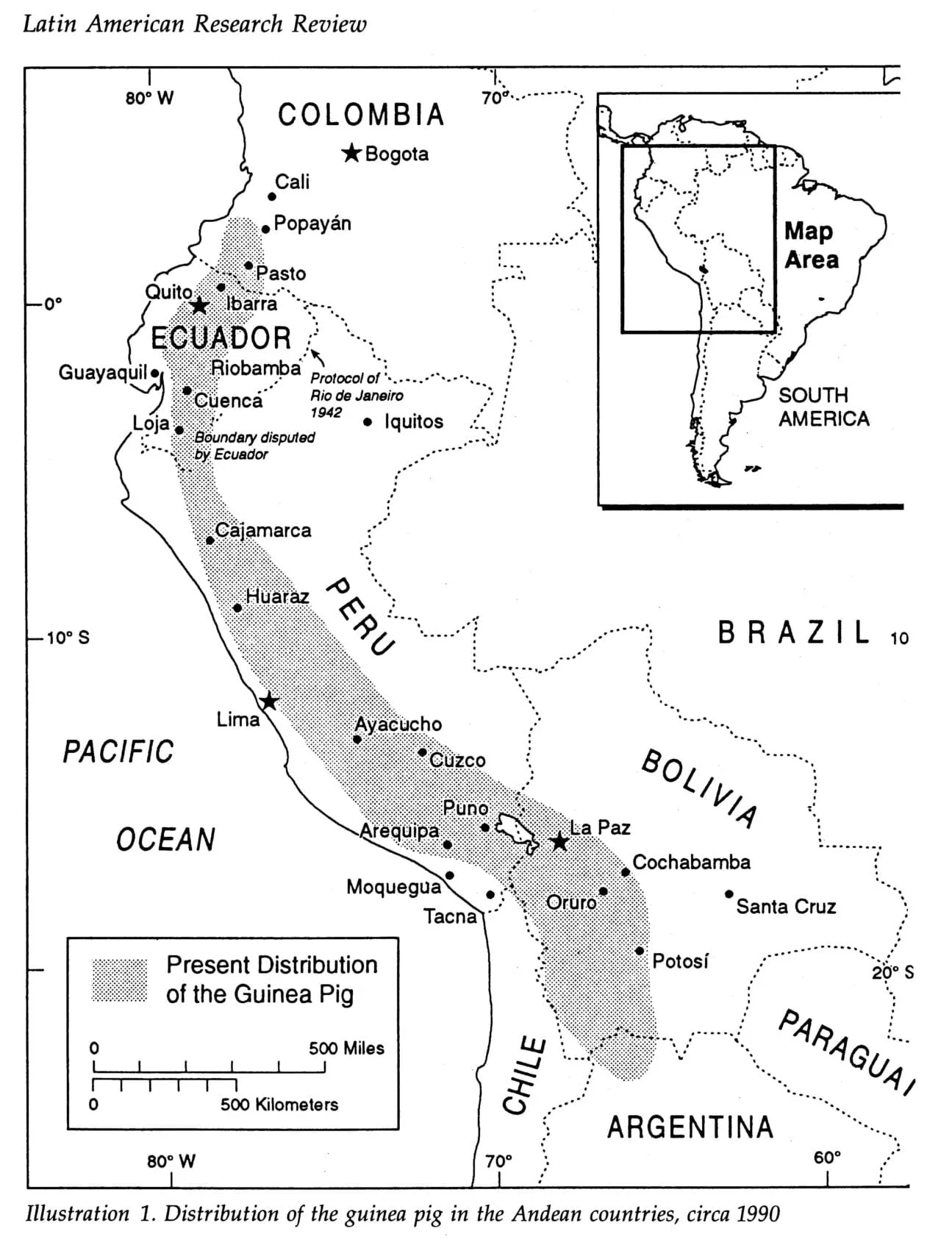
The Cuy is a rodent mammal native to the Andean zone of Bolivia, Colombia, Ecuador and Peru.
Guinea pigs are one of three mammals domesticated in the Central Andes in addition to llamas (Lama glama) and alpacas (Vicugña pacos). Dogs (Canis lupus familiaris) were fully domesticated when they accompanied human settlement of the Americas.
Researchers believe that the modern Cuy is the result of the domestication of various wild species, such as Cavia tschudii and Cavia aperea, which existed throughout the Andean region, from Colombia to Chile.
Cuy may also have been consumed extensively along with fish and shellfish on the Pacific Coast.
Guinea pigs appear in archaeological deposits as old as 9000 years ago; they may have been domesticated as early as 5000 BC, but were definitely so by 2500 BC
The distribution of the guinea pig population in Peru and Ecuador is wide; It is found in almost the entire territory, while in Colombia, Bolivia and Argentina its distribution is regional and with smaller populations. Due to their ability to adapt to various climatic conditions, guinea pigs can be found from the coast or the plain to heights of 4,500 meters above sea level and in both cold and warm areas.
According to Weir, the major effects of domestication were increases in body weight and in litter size. White or multicolored hair are other traits of domesticated guinea pig. The advantages of raising guinea pigs include their quality as a herbivorous species, their short reproductive cycle, the ease of adaptation to different ecosystems, and their versatile diet.
Anthropological and ethnohistorical studies highlight the importance of guinea pigs as objects of sacrifice, torture, oracle, propitiatory and healing offering; as cosmic symbols and myth actors; and as a companion of ancestral divinities in the Andes.
Archeological Cuy findings
The Andean archaeological record indicates that guinea pig management practices were domestic and not elaborate. At some sites holding pens are present within domestic structures.
Because guinea pigs reproduce rapidly and are used primarily as food, the preference was to consume animals when they reached full body size, but were still young (e.g., one year of age). Guinea pig dung may have been used as fuel, but since guinea pig provide no other secondary products, rearing them after they reached full size was not economical.
At the time of Spanish colonization and the height of the Inca Empire (late fifteenth century), guinea pigs were considered a high-status food. In addition to cuisine, Inca sites also indicate that guinea pigs were used in mortuary offerings at Machu Picchu.
CUY: Ceramic rodents
Periodization of pre-Columbian Peru
Preceramic era or formative period
3500 BC – 1800 BC
Cerro Sechin, Huaca Prieta, Kotosh culture, Guitarrero, Chinchorros.
Ceramic era
Initial Period (Formative Period)
1800 BC – 900 BC
Kotosh culture, Cupisnique, Toríl (The Cumbe Mayo aqueduct was built 1000 BCE), Las Haldas, Pucará, Casma–Sechin.
Early Horizon (Formative Period)
900 BC – 200 BC
Chavín, Late Chiripa, Paracas, Pechiche, Pucará, Sechura, Casma–Sechin
Early Intermediate
200 BC – 600 CE
Moche, Nazca, Recuay, Lima, Tiwanaku, Pechiche, Piura, Salinar, Vicus, Huarpa, Virú
Middle Horizon
600 CE – 1000 CE
Wari, Tiwanaku, Piura, Las Ánimas, Early Chiripa
Late Intermediate
1000 CE – 1476 CE
Chimú, Cajamarca, Piura, Chancay, Chachapoya, Chincha, Chiribaya, Chucuito, Huaman Huilca, Ilo, Qotu Qotu, Pacacocha, Palli Marca, Piura, Sican, Tajaraca, Huaylas, Conchucos, Huamachuco, Rucanas, Chanka, Wanka, Aymara kingdoms (Qulla, Lupaca, Charca, Kana, Qanchi), Ayabaca, Bracamoros, Huancabambas, Tallán, Tumpis, Huarco, Coayllo, Ichma, Parinacota, Cuntis, Chinchaycochas, Huarochiri, Kheswas, Yaro, Atavillo, Cantas, Yauyos, Tarmas, Paltas, Camanas (peruvian culture), Huayuri
Late Horizon
1476 CE – 1534 CE
Inca
The representation of the guinea pig on ritual ceramics resembled that of the llama and alpaca and was known as illa, conopa, inkaichu, ullti or ullqui and was attributed an immense power to promote fertility and social well being called enquay, eng’a or inkaichu. Onqoy was related to disease, death and evil – the Enqay and Onqoy duality was good and evil in the Andean worldview. The images endowed the ceramics with the function of prodigiously multiply the herds of camelids, the agricultural harvests, the fishing, crafts, and good luck on long journeys.


This vessels of Museo Rafael Larcode Lima from the Mochicas and Vicus cultures, show the importance of cuys in human nutrition and rituals.
MOCHE MYTH: Aia Paec with a wrinkled face
In numerous vessels of the Moche culture it is possible to observe representations of guinea pigs as part of ritual activities. A vessel of Museo Rafael Larcode Lima (ML002972) from the site of Huancaco (Virú Valley), corresponding to a sculptural stirrup handle neck bottle, represents the Divinity of Aia Paec with a wrinkled face and representing various animals, including the guinea pig.

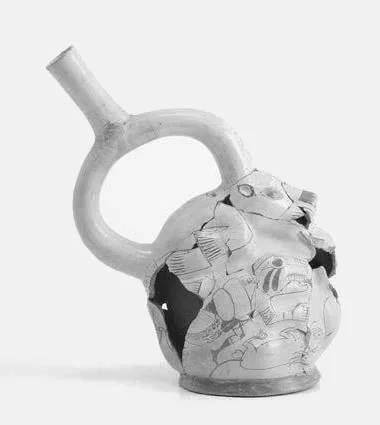
The character Wrinkle Face, who wears a feline headdress and serpent belt, was accompanied by a supernatural iguana. Wrinkle Face appears in the scenes related to the ideology of burial, which also include the scenes with the Tule Reed Boat and scenes of animated objects that come to life and capture humans. The Rayed God or Owl and Bird Warrior are identified in recurring dramas relating to presentation of sacrificial victims or burial. The recent discoveries of sumptuous burials with the full regalia of the Warrior Priest at Sipan suggest that narrative scenes once thought to be simply mythological were actually reenacted and could have formed separate acts from the same play.
The Revolt of the Objects
Moche imagery is renowned for the depiction of objects that appear animated, like lima beans with legs that are running. One of the most famous scenes is from a mural at the adobe pyramid Huaca del la Luna, where objects such as weapons and utensils are in the process of attacking humans, perhaps their owners. This “Revolt of the Objects” is probably one expression of what the Incas later called pachacuti, a widespread theme in native America related to the periodic destruction and renewal of the world. In the dark and chaotic period following the end of one world and the beginning of another, manufactured objects and domestic animals turn on their human masters.
Quilter’s analysis of the Moche scenes suggests that they refer to a period of chaos ruled by a female deity who was eventually subdued by the male Sun deity. Allen relates them to a transition period in contemporary accounts of the journey to the afterlife, when the soul has to pass a series of villages inhabited by objects and animals – dogs, cooking pots, guinea pigs – that served him or her in life.
During this transition between life and death, the tables are turned, and if the master abused these servants in life, they will attack him as he passes through their village.
From their first appearance in Andean archaeological sites, guinea pigs occur charred and/or with cut marks, indicating their use as food.
After about 2500 BC, guinea pig remains also appear in contexts suggesting ritual use.
CUY Archeology: Ritual rodent remains
The following review of ritual rodent remains is meant to be illustrative rather than exhaustive.
The role of guinea pigs in early states, formative societies, and Andean cultures varied through time. In addition to the presence of presumed food remains of guinea pigs at sites predating the Inca state, including the Wari Empire (Andean Middle Horizon, AD 600–1000), sacrificial animals are preserved at some earlier sites as well. The mortuary sacrifice of complete guinea pigs comes from the Wari site, Beringa, in southern Peru.

At the Late Intermediate Period (AD 1100–1450) site of El Yaral, the excavation of subfloor contexts from domestic structures produced remains of 112 naturally mummified guinea pigs that had been sacrificed by means such as beheading and throat slitting. Some of these animals were color coordinated to match sacrificed llamas and alpacas that they accompanied. Some were accompanied by grave goods (e.g., sticks from the molle plant or coca leaves) or had coca leaves placed in their mouths.
In the studies carried out in the temple of Cerro Sechín, abundant deposits of guinea pig excrement were found and cuy-sculls in the first period of the Paracasculture (250 to 300 BC).
Remains of guinea pigs have been excavated in Ancón, ruins of Huaycan, Cieneguilla and Mala.
The discovery of guinea pig skins, mummies and bones buried with human remains in tombs abound in South America.

Inside buildings at the Inca site of Tambo Viejo, along the south coast of Peru, MacEwan University anthropology professor Lidio Valdez and his team discovered hundreds of sacrificial Guinea pigs adorned with earrings made of orange, red, purple and brown strings. The findings are significant, because they help confirm early Spaniard accounts that the Inca sacrificed hundreds of Guinea pigs.
A Japanese Expedition to the Andes found burned guinea pig and large mammal bones placed as offerings in the niches of the Temple of the Crossed Hands at Kotosh, in the north-central highlands of Peru. The Temple of the Crossed Hands was built during the Late Preceramic Mito Phase at Kotosh, dated between ca. 2500-2000 BC
A short distance to the north and west of Kotosh is Chavin de Huantar, where Luis Lumbreras found guinea pig remains in the Gallery of the Offerings in the Old Temple, dating to the Urabarriu Phase between ca. 1000- 500 BC This gallery is one of many inside a temple full of cultic art, and the bones were deposited along with other food remains, hundreds of ceramic offerings from a wide region, and two artifacts made of the Spondylus shell.
During the later Janabarriu Phase (400-200 BC), Richard Burger found an offering of guinea pigs and Spondylus shells under the floor and wall of a residential terrace in the secular part of the Chavin site. As at Kotosh, the context makes the ritual nature of the Chavin guinea pig offerings clear, even if the rituals may have involved eating the rodents.
Considering the good preservation and considerable amount of excavation on the desert coast of Peru, it is surprising that early guinea pig remains are quite rare there, and none are known from unequivocally ritual contexts as early as Kotosh or even Chavin. At Culebras 1, a Late Preceramic site (ca. 2500-1800 BC), Lanning reports stone-lined tunnels filled with guinea pig and anchoveta (fish) bones and interprets them as guinea pig hutches. However, Rosa Fung suggests that they may be ventilation shafts for ritual hearths related to the Kotosh Religious Tradition. If so, then the bones found at Culebras would be the earliest coastal evidence for ritual use of guinea pigs, as early as in the highlands.
For later prehistoric periods, dating between ca. 200 BC and A.C. 1532, several reports identify guinea pigs as offerings. The most important find is Silverman‘s Feature at Cahuachi, dating to the early Intermediate Period, during the first several centuries A.C. The Cahuachi guinea pig cache included at least 23 well-preserved individuals:
The remains consist of disarticulated and disarticulating bodies whose heads had been jerked off and whose stomach appears to have been slit open by a long incision which extends to the thorax. . . all appear to be young individuals.”
~Silverman 1993.
More reports of guinea pigs in ritual contexts exist for the late prehispanic periods (Late Intermediate-Late Horizon, ca. A.C. 1000-1532). Horkheimer refers to mummified guinea pigs found in urns at Puruchuco by Jimenez Borja. A more recent, revised version of this work mentions numerous guinea pig remains in coastal middens and graves and also says that:
“The Chancay Archaeological Mission …found a great number of guinea pig skeletons.”
The context in which these skeletons were found is unclear. The sites excavated by Horkheimer pertain to the Chancay Culture.
At Ancon, between Chancay and Lima, Dorsey found a number of burials which included disarticulated guinea pig bones in pottery or gourd vessels dating to the Late Intermediate Period.
From the Early Intermediate Period through the Late Horizon, Pachacamac was the major religious center for the Peruvian coast. It is located in the Lurin Valley, just south of Lima. Daggett reports that in 1938, Albert Giesecke found “a great quantity of guinea pigs wrapped in coverings of maize and achira” just below the summit of the Pachacamac Temple. This structure apparently spans the time from the Middle Horizon to the arrival of the Spaniards.
At Chan Chan, the later Middle Horizon and Late Intermediate Period (ca. A.C. 850-1470) capital of the Chimui empire, located near Trujillo, Peru, Topic (1982) found guinea pig pens in the kitchens of several artisan’s quarters, but there is no mention of guinea pigs in unequivocally ritual contexts at this site.
Ticume was the dominant site in the Lambayeque Valley Complex on the north coast of Peru during the Late Intermediate Period and Late Horizon (ca. A.C. 1050-1532), first as an independent center, then as the administrative center for the Chimui and later Inca empires (Sandweiss and Narvaez ). Food remains at this site include guinea pig bones, and one intact animal was found in a pottery bowl inside a mummy bundle dating to the very end of the Late Horizon or Inca Period and buried in the principal Inca structure. It is not clear how this specimen died.
The role of guinea pigs in Andean Cultural history, Heritage and Ethnography
Excerpted from Ritual rodents: the guinea pigs of Chincha, Peru. DH Sandweiss, ES Wing. Journal of Field Archaeology 24 (1), 47-58, 1997.
Early Ethnography of the Cuy

Early Spanish observers and indigenous writers of the Colonial Period, and modern ethnographers have all commented on the role of guinea pigs in Andean culture.
The documentation indicates that this small rodent was used for a variety of purposes, including food, medicine, diagnostic medical devices, and sacrifices to the gods.
Among the early sources, lawyer and government official Juan Polo de Ondegardo wrote in 1559 about the Andean practice of cutting open various animals-including guinea pigs-to study their entrails for good or bad omens; guinea pigs for sacrifice were to be domestic, not wild.
Some 30 years later, Father Jose de Acosta wrote that the Indians considered the guinea pig, or cuy,
“as very good food, and in their sacrifices they very frequently offer these guinea pigs.”
Santiago Antunez de Mayolo states, that because of the ritual uses of guinea pigs, in the 16th century.
“the Spanish priests requested that Archbishop Loayza [first Archbishop of Lima, 1545-1575] order all of the guinea pigs to be exterminated; but the Archbishop refused to do so for fear of a general rebellion that this action could imply.”
Sometime between 1597 and 1608, Father Francisco de Avila transcribed indigenous Quechua myths from Huarochiri, a native community in the highlands above Lima. In nine of the myths, guinea pigs are among the sacrifices made to placate angry gods or plead with them for special favors.
In 1621, Father Pablo Jose de Arriaga wrote that:
“the ordinary sacrifice is of guinea pigs, of which they make evil use, not only for sacrifices but also to divine with them and to cure with them. . . When they have to sacrifice them, sometimes they open them along the middle with the nail of the thumb…”
A contemporary of Avila and Arriaga, indigenous chronicler Joan de Santa Cruz Pachacuti Yamqui Salcamaygua, also mentions the sacrifice of guinea pigs.
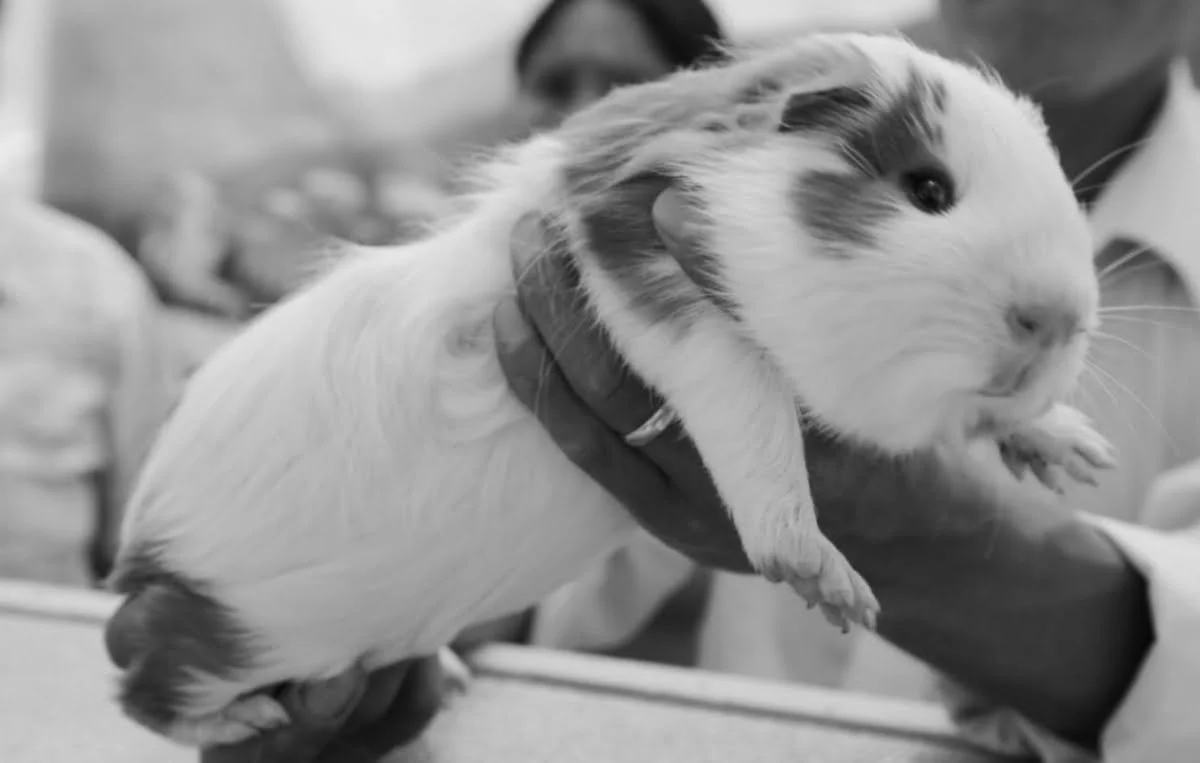
During the first half of the 17th century, Father Bernabe Cobo traveled widely in the Andes; he was particularly interested in the plants and animals of the region, and he left the following description of the guinea pig:
The guinea pig is the smallest of the domestic animals that the natives of these Indies had; they bred it in their houses and centers, as they do today. It is little bigger than a rat … [but] it lacks a tail. There are guinea pigs of many colors … They have a low voice, which makes a noise like a child that cries or moans, although when they are grabbed, they give more strident squeals.
Drawing largely on a mid-16th century document by Polo de Ondegardo, the colonial-period Spanish chronicler, also wrote that.
The sacrifice of cuis [guinea pigs] was also considered quite acceptable. And it was very common to use these little animals to see the outcome of future events by slicing them open and looking for certain signs.
They were used also for many other purposes, but it would take too long to tell about them.
Bernabe Cobo
FOLKLORE: Inca agricultural Rituals involving Cuys
On ceremonies related to agriculture that took place in Cuzco in August/September (gregorian calendar), Kapaj Situwa (Vakárcel), big cleaning ceremony or Yapaquis (Acosta) or Chacra-yapuy (Guaman Poma)
The big cleaning ceremony
In “Historia natural y moral de las Indias” written by P. José de Acosta:
The ninth month was called Yápaquis, in which another hundred chestnut rams were burned and a thousand guinea pigs were slaughtered and burned, so that the ice, air, water and sun would not harm the chácaras (fields); this one seems to respond to august.
The major idols and huacas were at Huarco, Pachacamac and Aysavilca. They made sacrifices of five-year-old children, colored cotton cloth, tupa coca [the finest coca], fruit and chicha. The Yauyo Indians made sacrifices of chicha, mullo [seashells], uaccri [precious stones], zanco [maize bread], food and cavies [guinea pigs] to Pariacaca.
In 1613, native chronicler Guaman Poma de Ayala mentioned that in the month of Chacra yapuy (August), the Incas would sacrifice 1000 white guinea pigs, along with 100 llamas, in the plaza of Cuzco, the Inca capital:
“they made this sacrifice so that neither the sun nor the waters would harm the food and crops and fields.”

The depiction of ritual offerings of guinea pigs by Guaman Poma shows two individuals making offerings of a child and a small four-legged tailless mammal to a mountain huaca (revered, animate landscape feature such as a mountain peak). The mammal, interpreted by Yamamoto as a guinea pig appears to be a young cuy.
According to Don Juan de Santa Cruz Pachacuti-Yamqui Salcamayhua the sacrifice of children and guinea pigs to the sun was practiced by the Collas following their battles with the Inca.
Interestingly, Guaman Poma includes several depictions of llamas serving as offerings to huacas, but this image of a guinea pig is the only non-camelid depicted being offered to a mountain huaca.
Agricultural fertility was affected by the mountain Apus and the meteorological deities like Lightning and the supernatural feline, Ccoa, who lived in the sky and was thought to be the cause of destructive hail. The same deity Lightning was also responsible for the clouds that hung over fields and protected crops from nightly frost. The movements and also brightness of celestial bodies such as the Pleiades were and still are crucial determinants of when to plant. The sun, whose heat was ultimately responsible for rainfall, also determined a successful harvest.
In Cuzco, the Inca ancestors were also considered to have introduced staple foods and were venerated for the well-being of those crops. At the start and end of the agricultural year, the Inca elite went a short distance out of Cuzco to the maize field called Sausero, which was dedicated to Mama Huaco, the founding ancestress who sowed the first maize seeds. The Inca king himself opened the planting season amid joyful singing and solemn sacrifices of llamas and guinea pigs.
Inca ritual use of the Cuy
Daniel Sandweiss, an archaeologist from the University of Maine, during excavations in the Chincha Valley, near Peru’s central Pacific coast in the 1980s, proved that current ritual healing practices with guinea pigs date back at least to the Inca Empire (which reached its height in the 1400s before the Spanish conquest).
A recent news article about guinea pigs notes that in the village of Huasao, a third generation curandero, treats bad luck with tipsy guinea pigs. Forcing a jet-black guinea pig to drink a tall glass of beer-its power to remove bad luck is believed to be stronger when it is drunk-the curandero then adorns the glassy-eyed rodent with colored ribbons before rubbing it over a patient. The guinea pig is set free in the countryside, ribbons and all, but remains highly contagious with bad luck that will pass to anyone who has the misfortune to cross its path.
As Eduardo Archetti, writes, in The Social And Symbolic World Of Guinea Pigs in the Andes:
During the Inca Empire, the guinea-pig was important both in people’s diet and in the ceremonial world.
Llamas and alpacas belonged to the state, whereas the guinea-pig was the “popular” animal par excellence. There is clear evidence that guinea-pigs were consumed only on ritual occasions and were never part of the everyday peasant diet. Various chronicles emphasize that the guinea-pig was slaughtered and eaten only on festive occasions or when making offerings to the gods. At the same time, the guinea-pig was used as an instrument of divination. There is no evidence that it was used as a totem.
Guinea pigs and other rodents such as vizcachas and pericotes or ukush are present in the Andean mythology as civilizing heroes of the underworld and are related to tubers (potato and other root vegetables native to the Americas).
In addition, guinea pigs gnaw on the rope of life that unites the kay pacha with hanan pacha when they protect the mythical twins in their flight from Achiké or Achka. Hanan Pacha is the higher world or also called the world above. The home of the Inca gods (such as Viracocha, Pachacamac, Mamacocha and the Inca gods of the sun, Inti and Mama Quilla (the Moon goddess). This world can only reach the souls of the righteous, who must first cross a bridge woven with hairs. Kay Pacha, was the visible world, where plants, animals, men and spirits live.
MYTH: Age of Human Beings (Age of the Sun)
Human Beings Come Forth from Pacarinas and form an Ayllu
The first three runa (people) were males who sprang out of the earth like toads and founded the ayllu of Sonqo. They were named Poma and emerged from Urcocancha (a hill enclosure); the Chura, from Yutukalli Toco; and the Yuqra, who emerged from Colquecancha. They had many descendants, and their village was beautiful. A Yuqra maiden carried water to Kuyo Grande, a neighboring community. The people of Kuyo Grande kidnapped her, and subsequently there have been a lot of Yuqras in Kuyo Grande and none in Sonqo.
Plague – A Wandering Man with a Trumpet and Backpack
The plague destroys the Ayllu with Disease and Taxation This new ayllu was destroyed during the Pisti Timpu (Time of Pestilence). The plague was a little old man who came up the path from Colquepata (the district capital) with a backpack and blowing a pututu (conch-shell trumpet). The plague passed Q’ello Unu and Huancarani, and when it reached Sonqo nearly all the people died. During this time, parents butchered and ate the bodies of their dead children, and babies were left to suckle on the breast milk of their dead mothers. There was no one to bury the dead, and guinea pigs, normally raised in houses for food, ate the dead bodies. At this time, money was scarce, and whenever you had money you tried to spend it as soon as possible.
After the plague, only a few children were left, and the ayllu was repopulated by immigrants from outside. Thus, few Churas and Pomas are left now, and most Sonqueños have foreign surnames. Explains Van Dalen, P., in his thesis: “El uso y la importancia del cuy en las sociedades andinas a partir de las evidencias en la provincia de Huaral.”
Ritual Cuys of the Inca
Alfredo Altamirano (1995), identifies the following types of rituals that are related to guinea pig offerings during Inca times:
Propitiatory Offering
It is the cyclical rite carried out with the purpose of receiving the grace of the ancestors and/or the gods to achieve well-being for the community or supra-community. Places for this offering are, the huacas, in front of the sacred mountains, meeting of rivers or paths, lakes, caves or machay, or in the cemeteries.
Votive Offering
Unlike the previous one, it is non-cyclical, has an individual or family character and is made with the intention of asking for a grace or a cure.
Rites of passage
It is the rite of sacrifice of the guinea pig celebrated during the so-called liminal period and when there is a change of place, status, social position and/or age. For example, the transition from puberty to maturity, marriage, death, travel, healing, cattle branding, haircutting or shearing, among others.
Libation Rite
It is the liquid offering of the blood of the individual or animal sacrificed, the blood is mixed with other ingredients in ceremonial vessels and stored to be redistributed, first to the curaca and then to the participants; the libation occurs frequently in the seasonal official holidays. For example, the festivals of Inti Raymi, Capac Raymi and Inka Raymi or Ayriway.
Guinea pig’s blood, contained in a bowl or plate, is sprinkled over the superficial bones of the ancestors in the cemeteries or huacas, with the fingers.
Banquet Rite
It is the ritual act that follows the sacrifice of animals of a certain species, age and sex, concentrating several participants during the official festivities. It consists of consuming the meat of the sacrificed animal, discarding parts destined for the ancestors and divinities, the ritual is held to consolidate social integration of a reciprocal and redistributive nature. For example, during the visit of the Inca or some important character, they sacrificed hundreds of guinea pigs to feed the people and the elite.
Burnt offering (Holocaust)
It is a solid offering for cremation within the framework of rites. It is usually celebrated before starting a war or an alliance and a disjunction or a social conjunction. The incineration of camelids, guinea pigs and birds allows the symbolic communication between priests and participants, through gestures, songs, dances, clothing and place of the ritual. Smoke generated by the burning of the wira or fat of llamas or guinea pigs during the ceremony of the huayra in the temples, as in Caral, El Paraíso, Cerro Sechín, Pachacamac, among others, allowed interpreting the bidders, giving a positive or negative prediction of the health of a sovereign, of wars, alliances and political issues.
Ritual slaughter
Sacrifice comprises a type of “ritual slaughter”, whereby life to an animal to obtain something beneficial. Jo Osborn does a classification of Andean animal sacrifices into:
- construction
- retention sacrifices
- supernatural offerings
- sacrifices of divination or healing
Construction sacrifices correspond to those animals that are sacrificed at the beginning of a construction, building, bridge, etc; with the belief that, with this, the new building will endure and not collapse.
The Retention sacrifices are those in which animals are slaughtered and deposited inside the tombs of the dead with the belief that these Animals will go to the world of the dead to serve the deceased in some way. The food of the dead is also found in this category, in which the sacrificed animals will be buried in the tomb, whether in a state natural or seasoned and cooked, as well as the ritual banquets in which the relatives will eat the animals sacrificed in honor of the deceased.
For his part, in the supernatural offerings, the animals will be sacrificed in honor of the gods (divinities, apus, wamanis, huacas, etc), being placed as a offering.
Banquet Rite: On how the Incas eat their cuys
According to Father Cobo (1964 [1653]), the Indians considered guinea pigs a favored food, and generally made a stew called calapurca out of them.
The Incas used to prepare a guinea pig-based dish for each month of the year, to serve it in their celebrations of Mother Earth. For example, in the month of August, called in Quechua Chacra Yapuy Quilla (which means month of cleaning the land), the Incas returned to their homes to sweep and then burn what was useless. The “Chacra Yapuy Quilla” was symbolized by the color red and, therefore, the food prepared in that month was the Picante de Cuy: a typical Peruvian dish based on reddish ground chili peppers.

In the month of cleaning, the Incas performed acts of forgiveness for any aggression and offense. Everyone had to go to the Central Plaza while the priests prepared the Kuy Kusay Soksipi: a typical guinea pig roasted on hot stones. Each Inca family had to bring a guinea pig. The priest inspected and discarded all the guinea pigs that had red eyes. There was a belief that a guinea pig with red eyes was synonymous with the fact that the family had not yet finished apologizing for their actions.
As a result, guinea pigs with red eyes began to be eliminated and, still today, many breeders prefer to discard all specimens with red eyes.
Poma repeats the late sixteenth-century Spanish mandate advocating against the practice of individuals of different ethnicities dining together because it was thought to contribute to lax morals. In the image, the Spanish corregidor (local government official/mayor) is hosting a meal with a Native cacique, a mulatto, and a mestizo as dinner guests. The guinea pig is the only visible meat on the table.
Cuy rituals today
The ethnographic and ethnohistorical records demonstrate a clear continuity in guinea pig use from the Colonial Period to the present day. Also the archaeological record shows general continuity of their use as food and as offerings. Despite changes throughout the centuries, rites involving the cuy still survive among Andean communities, with many assuming their part in Catholic rituals as well. For example, country regions and villages hold festivals honoring their patron saint with cuy as the main dish.

In some villages, cuy, potatoes, and other items are tied to crossbeams on long poles and young boys and men climb the poles to take their prize.
A custom practiced in the planting of potatoes consists of eating guinea pig and drink chicha to ensure a good harvest. Certain fertility beliefs are hold, the guinea pig is tought to be very prolific, it is for this reason that some women refrain from eating it in order to prevent frequent pregnancies.
Other quasi-religious uses of the guinea pig include omen foretelling and as good luck and protection charms. Some communities in the Andes believe that when a cuy stands on its hind legs and demonstrates a whistling, cough-like sound, it is bad luck and a prediction of death in the family. The animal is immediately killed and eaten.
Keeping the right foot of the cuy as a good luck charm when traveling long distances is still a practice. Some offer cuy skulls to the ahuilus, spirits of ancestors that live in the mountains, in exchange for protection from storms that could prevent them from reaching their destination safely.
In the south of Cusco (Santa Barbara, province of Canas), guinea pigs are still essential in religious ceremonies of worship to the apus (mountain gods), requesting favors and help from the inhabitants, especially in the rituals to keep the hail away and prevent it from affecting the crops.
At the moment that the inhabitants observe that the charged and colored clouds are approaching dark, they hold a guinea pig in their hands as they run out of their house, squeezing the guinea pig’s ears and moving it from one place to another to make it squeal; well It is believed that the guinea pig’s cry or squeal is an imploration to the gods so that it does not rain so hard and protect the crops.
In addition, guinea pigs are also used in offering ceremonies to Pachamama and to the mountains, to request that they be granted a good production; proceeding to the burning of fetuses of guinea pigs (those that are dried from days before) together with other elements of the ritual offering.
Pachamama
Pachamama or mother earth is still considered an important divinity in the Andean world. She is responsible for natural occurrences, for fertility of man and fields and agricultural production. To appease her people offer “payments”or sacrifices, consisting of food, drinks (mainly liquors), animal sacrifice, coca leaves and sweets. She is the protector of man, plants and animals. Pachamama is closely linked to the world of health and illness, to which she is invoked:
“…certain diseases or as an essential element in the cure of others so many, since pacha mama intervenes in all the acts of life and the other gods always obey her.”
~ Perez. 2005.
There is also evidence of its medicinal use. According to priest Cobo (1964 [1653]) certain parts of guinea pigs were used to soothe some ailments such as muscle injuries and ear infections.
Divination or curative sacrifices are developed to guess the future or for purposes of medical cure of diseases – this is the case of the guinea pig.
ETHNOMEDICINE: Passar el cuy – Soba or Shoqma
There is a ritual practice of traditional Andean medicine from Peru and Ecuador of which there is already a record in the 16th century and which is carried out to this day, its name is La shoqma, also known as soba with guinea pig, in this practice the guinea pig is used to “clean” and/or to diagnose a person’s health problem. The expression “pasar el Cuy” means, to rub the guinea pig on the patient’s body.
Cobo (1964 [1653]) had this to say:
It was also customary to cure [patients] by rubbing and sucking the sick man’s abdomen and other parts of his body while smearing the same parts with grease or the meat and fat of the cui [guinea pig] or of a toad.
The detailed study of Bolton and Calvin (1981) in the village of Santa Barbara, near Cuzco shows, that: guinea pigs are eaten; used for divination, according to the sounds they make; sacrificed to Pachamama (the Earth Mother) and to the apus or mountain spirits; used as medicine; and referred to:
“as the x-rays of the Andean peoples for their utility in detecting the cause of the sicknesses”
Bolton and Calvin describe the guinea pig scan as follows:
An illness is diagnosed by rubbing the guinea pig over the body of the patient while chanting prayers and examining the internal organs of the animal after having sacrificed it. It is believed that the part of the body of the guinea pig which corresponds to the sick organ of the patient will show signs of sickness, for example, discoloration. After having done this operation, the curandero [folk healer] can recommend an appropriate treatment.

The analysis is handled in different ways in different areas of the Andes: sometimes the guinea pig is left alive and analyzed, but more frequently the healer slits the guinea pig’s throat. Then the curandero cuts the cuy open and analyzes its organs, blood, and bones to diagnose the patient.
Following the ceremony the cuy assumes the identity of the patient and allows for the curandero to link its body with the patient’s. El Rantín is part of a system of cure by magical substitution.
The diagnostis can include anything from mental health, to problems with organs, to parasites, to excessive heat/cold in the body (a traditional Andean health concept).

The healer can often offer up herbal knowledge for possible solutions. There is also quite frequently a spiritual aspect that the curandero mentions. Because a large portion of Andean conceptions of health relate to maintaining balance and social relations, the healers attempt to reconcile outside issues to heal the body.
The guinea pig, if kept alive, is taken to the huaca and presented as an offering to the deities of the sacred place; sometimes it is sacrificed and buried in situ, or is left loose, so that a cat, when ingesting it takes the disease, and according to others so that with its cries the rodent calls back health. The sacrifice of the guinea pig is accompanied by the offering of coca, cigarettes and alcohol.
In many of the cases cited by Morales, the entire hide of the animal is removed. Santa Barbara informants stated a clear preference for young (sub-adult) guinea pigs for the curing ritual. A male guinea pig is used if the patient is a man and a female guinea pig if she is a woman. This is a traditional practice done by healers in the Andes, generally using a guinea pig, but occasionally with flowers or other objects (Shokma).
This type of healing is used in many areas where Western medicine is either unavailable or untrusted and varies according to the tradition and/or lineage of the healer.
Other Folk Medicinal uses:
On small cuts and wounds, cuy fat is used for healing.
As a remedy for sunstroke, a black cuy is cut open and immediately put on the affected persons head. (Andrews)
The fat is often used as a curative agent; as in Cobo‘s day, it is considered efficacious for tight nerves and earaches, and as a general salve. The warm viscera are also used, applied to the body to extract rheumatic and abdominal pains.
Papus, in his work “El embrujamiento”, speaks of the “good witch” who, according to the possibilities of the client, prescribed for benefits, since she never did evil, a talisman, a candle and as a sure thing, the heart of a bull or better, that of “a guinea pig”.
Tschudi, writes in his work: “Contributions to history, civilization and linguistics of ancient Peru”, that, in the Inca region, especially Catamarca and its surroundings, there is the Tincun akuy and the Tincun acusnpa, a marriage love charm still practiced among the Koaikeres Indians of the region of Nariño and Ricaurte and Altaquer. The Kechua word “tinku” means the confluence of two rivers, the recasting of one into the other. Tinkuni is worth saying “meeting”, “bumping into” one another, which indicates love. The word “kuy” in this case meets the scope of fertilization, due to the characteristic of this animal that is lavished “like the stars of the sky”. So, the Tinkuna kuy is a love ceremony.
More historical uses of the cuy
In ancient times guinea pig skin and hair was used, to make different types of products, including ropes, handbags, straps and wallets, among others. At present in Ecuador, it is common using guinea pig skin in the leather industry, for the production of bags, handbags, through the technique of tanning skins and furs.
In Peru there are regions like Cusco where in recent years leather tanning is used. The main method is: zinc chloride, formaldehyde, salt and natural drying. Until a few years ago, in Junín, the peasants still made thin shoes for children who were learning to walk, using skin of old guinea pigs: “shucuy”.
The guinea pig excrement is used as fertilizer or natural fertilizer for the medium and small plants, due to their high mineral content (higher amount of nitrogen, phosphorus and potassium, components that are the ones that mostly used by plants) and low percentage of humidity; while his Urine can be used as a fuel or fixative for cosmetic products. With guinea pig excrement it is also possible to make organic compost, used as organic fertilizer with optimal results.
Note: This article is on the Cuy – Guinea pig – in history, mythology, folklore & everyday life in Peru.
This is not a medical advice. Please ask a health practitioner before trying therapeutic products new to you.
CUY: Pet or Protein?
Andeans sustained for centuries on potatoes and other tubers, quinoa, and tarwi (Lupinus mutabilis); and the four Andean camelids (llama, alpaca, huanaco, and vicuña). The guinea pig is native to the area, which is why the Inca peoples started raising them for food, creating small farms for breeding as livestock. Today cuy is still a popular food along the Andes, especially in Peru, Bolivia, Colombia, Ecuador, as well as in small pockets in Guatemala and Cuba.
The meet of the guinea pig is of high nutritional value (high protein 21%, low in fat 8% and amino acids) that contributes to the food security of the rural population with limited resources. Some even say that this meat helps prevent cancer.
There is also the option of consuming guinea pig’s blood, which is an excellent source of iron to prevent childhood anemia.In the Andean countries there is a stable population of more or less 35 million guinea pigs. In Peru, the country with the largest population and consumption of guinea pigs, there is an annual production of 16,500 tons of meat from the benefit of more than 65 million guinea pigs.
Peru is the world’s leading producer of guinea pig meat.
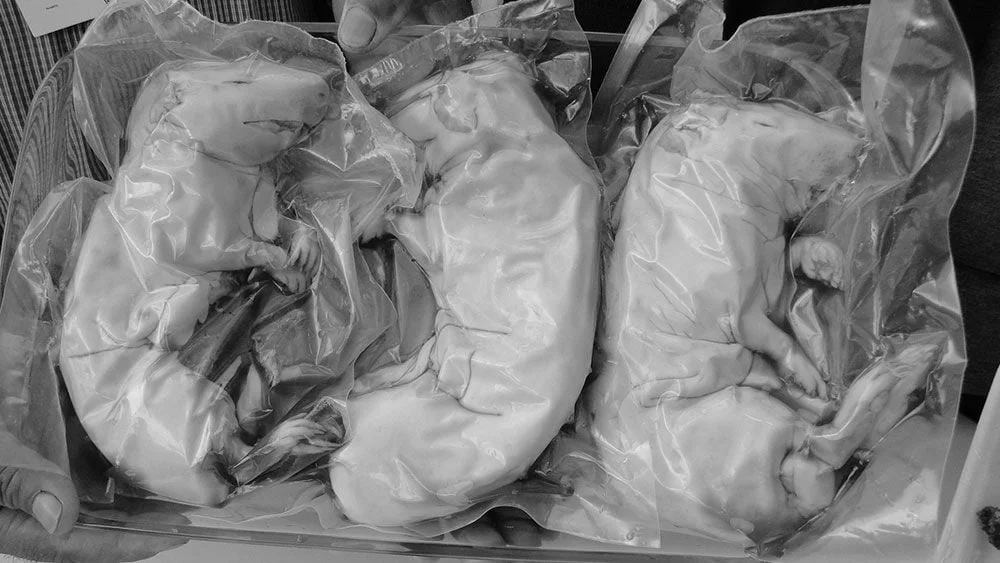
Approximately 100 million are slaughtered annually just within the region of Peru, Ecuador, Bolivia, and Colombia for food purposes. Throughout the Andes (meaning rural as opposed to the city) almost every Peruvian family has about 20 cuy. Indeed, about 90 percent of the cuy population is produced within traditional households.
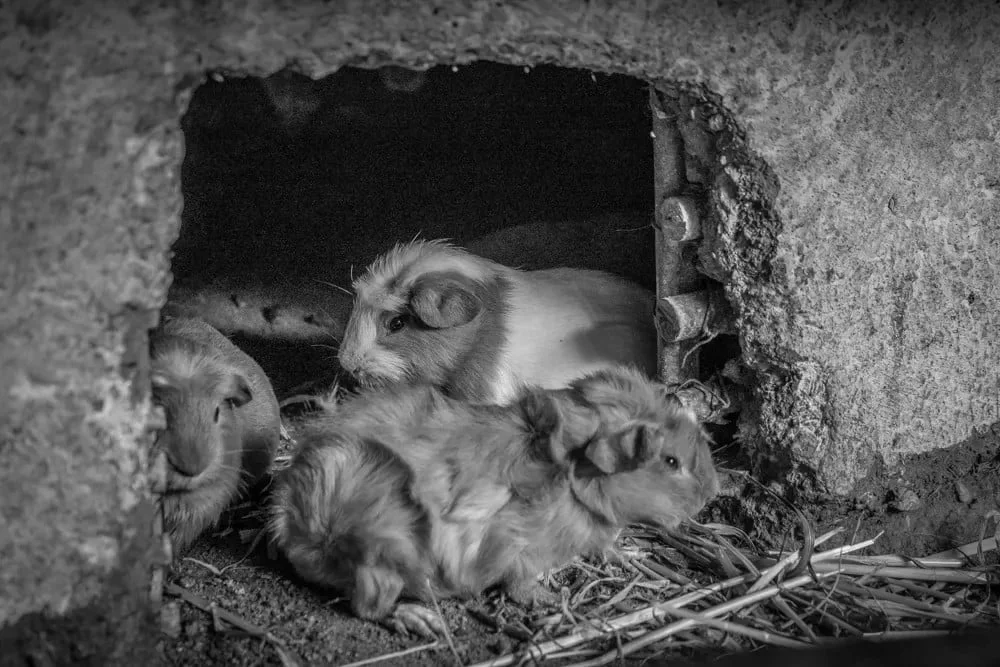
Although the rodents prefer alfalfa, they are often fed kitchen scraps such as potato peelings, grass, corncobs, carrots, and, in lower altitudes, ripe bananas.
The animals are kept in the kitchen although some people keep them in cuyeros or jacapukus (meaning cubby-holes or hutches in Quechua) built of adobe or reed and clay, or they may keep cuys in detached small hut like kitchens without windows.
In Cangallo people still believe that they need to keep cuyes in the kitchen, because the smoke benefits the guinea pig, since they drink it instead of water. The family that breeds guinea pigs cannot breed other animals, such as the cattle as it does not prosper. Because when cattle ingest guinea pig hair it dies. Also wouldn’t they sell their guinea pigs to healers so as not to fall into witchcraft.
Cuys are such an expected part of the Andean household that families who do not have cuys in their kitchen are considered to be lazy or extremely poor. The traditional method of raising cuys in the kitchen dates back hundreds of years, more technical exploitation being a fairly new activity.
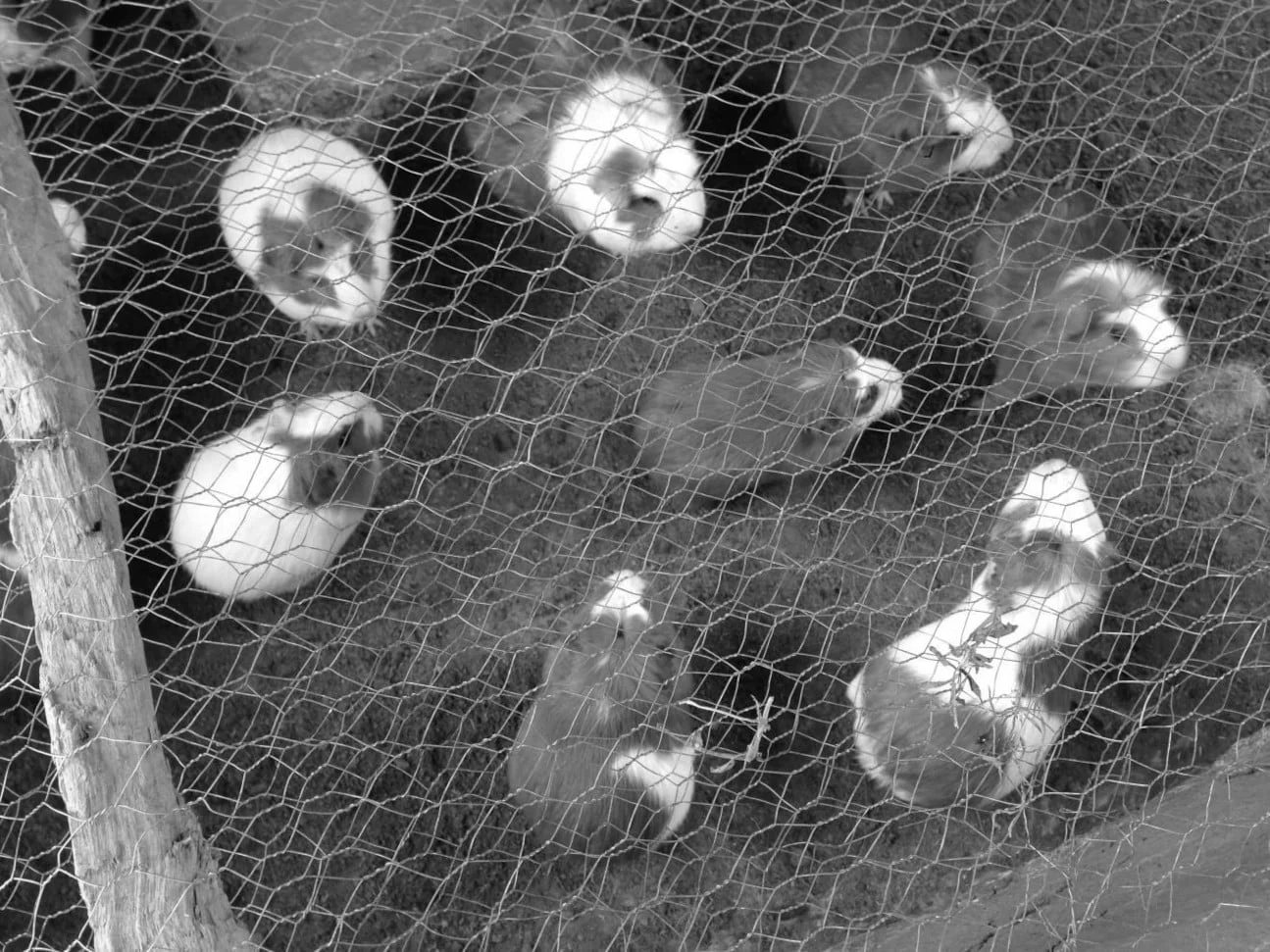
Peruvians don’t keep them as pets. Although it is also common to see children fond of these cute animals. Also we witness physical intimacy between humans and guinea pigs in the Andes. It was a fascinating reminder that the boundaries between humans and nonhumans, remain culturally contingent. Cuyes are food for villagers, but they are also household companions with cute whistles and grunts.
SAYING: Como cuyes – just like guinea pigs
David Henry Andrews writes in his, On the Ethnozoology of the guinea pig in Paucartambo, about the saying – Como cuyes – , just like guinea pigs. As cuyes were rarely confined to a pit or cage, they scurry around the floor, darting in and out of the wood pile and beneath and behind benches and tabels on the floor. This helter – skelter movement is the basis of the expression, frequently used to describe similar movements of animals and people.
Cuy festival of Churin
James: It’s like he said: Marvelous things will happen.
Glowworm: Did he say, “Marvelous pigs in satin”?
Grasshopper: No, dear lady.
[He takes out a megaphone and speaks through it]
Grasshopper: Marvelous things will happen!
James and the Giant Peach by Roald Dahl
During an annual festival in the town of Churin, residents celebrate cuys by dressing the animals up in colorful costumes. Some of them are turned into kings and queens while others are dressed up as miners and peasants.

It is very common to see traditional festivals in various areas of Peru, where the Guinea Pig is a protagonist with animals served in different dishes.
People gather and eat guinea pigs in honor of folk saints as part of a celebration known as jaca tsariy. Ceremonial cuy dinners are prepared for formal negotiations, including traditional marriages, asking for favors, or to honor a special guest or local political figure. Other occasions include infant christenings, catholic festivals and celebrating a boy’s first haircut. The cuy is a common food offered to the dead on November 2, All Souls” Day. It is also a tradition to give a pair of guinea pigs to newlyweds, children, or guests.

The Cuy National Day
On the second Friday of October, our country celebrates this small animal, which represents a very important part of our culture. This day was decreed in 2013 by the Ministry of Agricultural Development and Irrigation (MIDAGRI), in order to support the development of more than 800,000 small producers engaged in raising cuyes nationwide.
El zorrito – the little fox – a tradition
A deeply rooted custom in some regions is, at the end of the meal – the search for the zorrito or little fox, two small bones that are inside the ears of the guinea pig that is shaped like a fox.

After much of the cuy has been eaten, the diner uses their molars to crack open either one or both of the bullae in order to extract the petrosal or zorro, usually with their tongue. Peruvians are very skilled in recognizing this extremely small element and distinguishing it from other cranial fragments.
There are even regional contests dedicated to the search for this little bone, with which a board game is also played accompanied by drinks. The game consists of serving a glass of beer or the occasional drink with the little fox inside. The player must drink the glass in one gulp, avoiding swallowing the fox or that it stays in the glass; that is, he must take it out of his mouth and pass it to the next player. The game ends when someone swallows the little fox.
Some in Moquegua say that the zorro represents the intelligence of the cuy and that you gain some of the characteristics of the fox (e.g. quickness, stealth, and intelligence) when you consume it. In other areas of the Central Andes variations on the power of the zorro including the granting of good luck or predicting the strength of a relationship between a man and a woman (e.g. the two zorros representing a male and a female are placed in a glass and if they stay close when consumed the relationship is strong, but if they separate, the relationship may be weak) ~ Morales.

In Peru the last thing Jesus ate was cuy
Although subdued by the Roman Catholic Spanish in the 16th century the natives held onto their cultural traditions, many involving the cuy. From the beginning of Spanish colonization, the Catholic Church brutally suppressed Indian religious icons, but the culture of the guinea pig survived.
Geronimo de Loayza, the first bishop of Lima (1545 1575), refused a request by Spanish priests to order the mass extermination of the rodents, fearing it would spark a rebellion. The Spanish colonizers made Indian artists paint, weave, and carve items with Catholic themes to decorate churches and evangelize the natives. Artists copied prints imported from Europe but added Peruvian touches which often included cuy representations. Located in Cusco’s Plaza de Armas, the Cathedral Basilica of the Assumption took almost 100 years to construct, and was finally completed in 1654. It is a place of worship and a UNESCO World Heritage Site, that holds a large collection of Cusco’s colonial art and this stunning “last supper”.
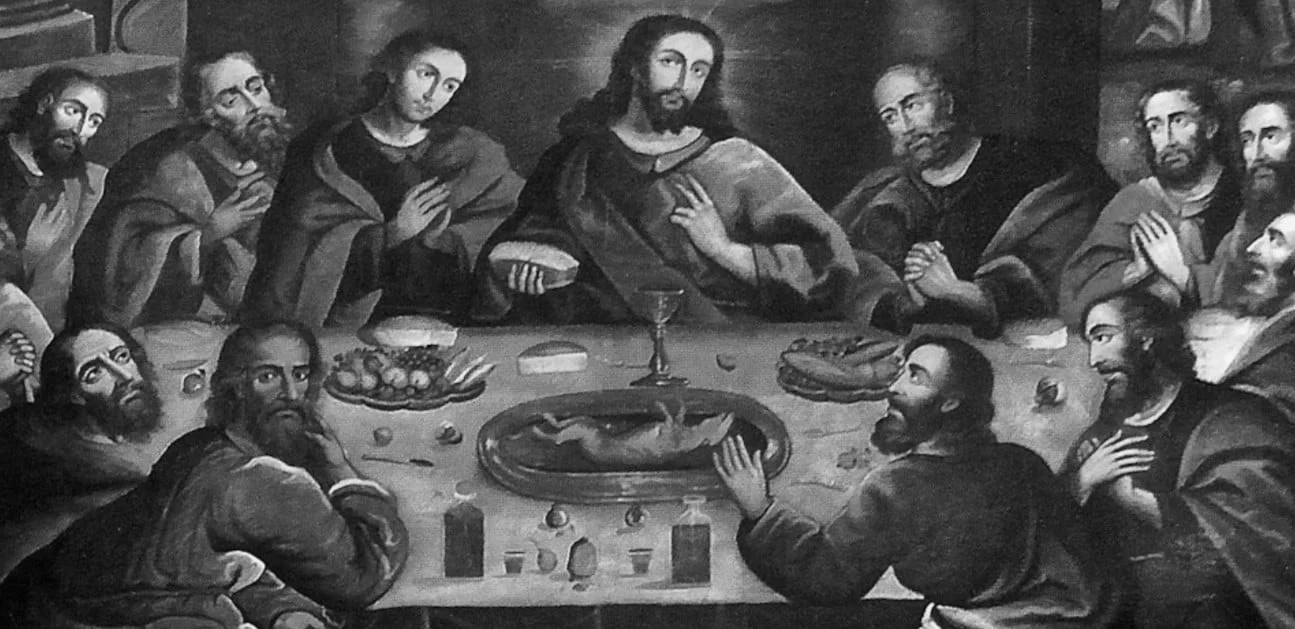
In Marcos Zapata‘s 1753 painting of the Last Supper in Cuzco, Peru, Christian symbolism is syncretized with Andean cultural tradition. Jesus and the Apostles eat a Cuy al Horno (Roasted Cuy – Guinea pig), traditionally served with the legs up, because the intrails are a delicacy to be eaten first, so we have been told. The Andean delicacy stocked with protein as well as cultural significance, was traditionally a sacrificial animal at Inca agricultural festivals and in this way it offers poignant parallel to the lamb, as a traditional Christian sacrificial animal. By using a symbol of sacrifice that was more meaningful to the Peruvian people, the artist makes a statement about the story of Easter.
During the Colonial period, the Cusco School produced artworks in which they combined Catholic iconography with elements of Peruvian culture. The Escuela Cusqueña (Cusco School of Art) was established by the Spanish to educate in the disciplines of European-style artwork. The Quechua artists were only allowed to paint scenes that carried Judeo – Catholic significance and they were not permitted to sign their work. The Last Supper as depicted by Marcos Zapata, found a way to incorporate Inca iconography into his work — such as the roasted cuy or guinea pig — a cultural delicacy still served today.
The spread on the table shows that Jesus and the disciples are also enjoying chicha, a brew derived from fermented maize that was often used in rituals, and native fruits and vegetables such as potatoes, peppers, and corn. It is believed that the artist painted Judas, the disciple who betrayed Jesus (shown at the bottom of the painting, holding the money bag, dressed in red and looking out at the viewer), to bear a resemblance to Francisco Pizarro, the brutal Spanish conquistador responsible for the fall of the Inca empire.
The Saint Francis Monastery located in Lima, Peru contains a seventeenth-century painting of the Last Supper by Diego de la Puente also showing a guinea pig along with Andean potatoes and chili peppers. And artists of the Quito school of colonial painting produced at least four images of the Last Supper featuring a guinea pig as the main course (Morales 1995:100).
These works cleverly critique arrogant Spanish assumptions about superiority.
Erwin told us, eat cuy with Huacatay
The meat is dark, rich, and savory, some say the flavor is a mix of chicken and rabbit with a bit of gaminess. In addition to being very nutritious, guinea pig meat is frequently described as highly desirable because it is “sweet” – a subjective descriptor of taste synonymous with delectability.
Traditional Cuy dishes
Cuy is a specialty dish in Peru, and whether we where in Arequipa, Lima, or Cusco, there were restaurants specialized in cuy, called cuyeria. It is often cooked whole and served with head, teeth and ears intact.
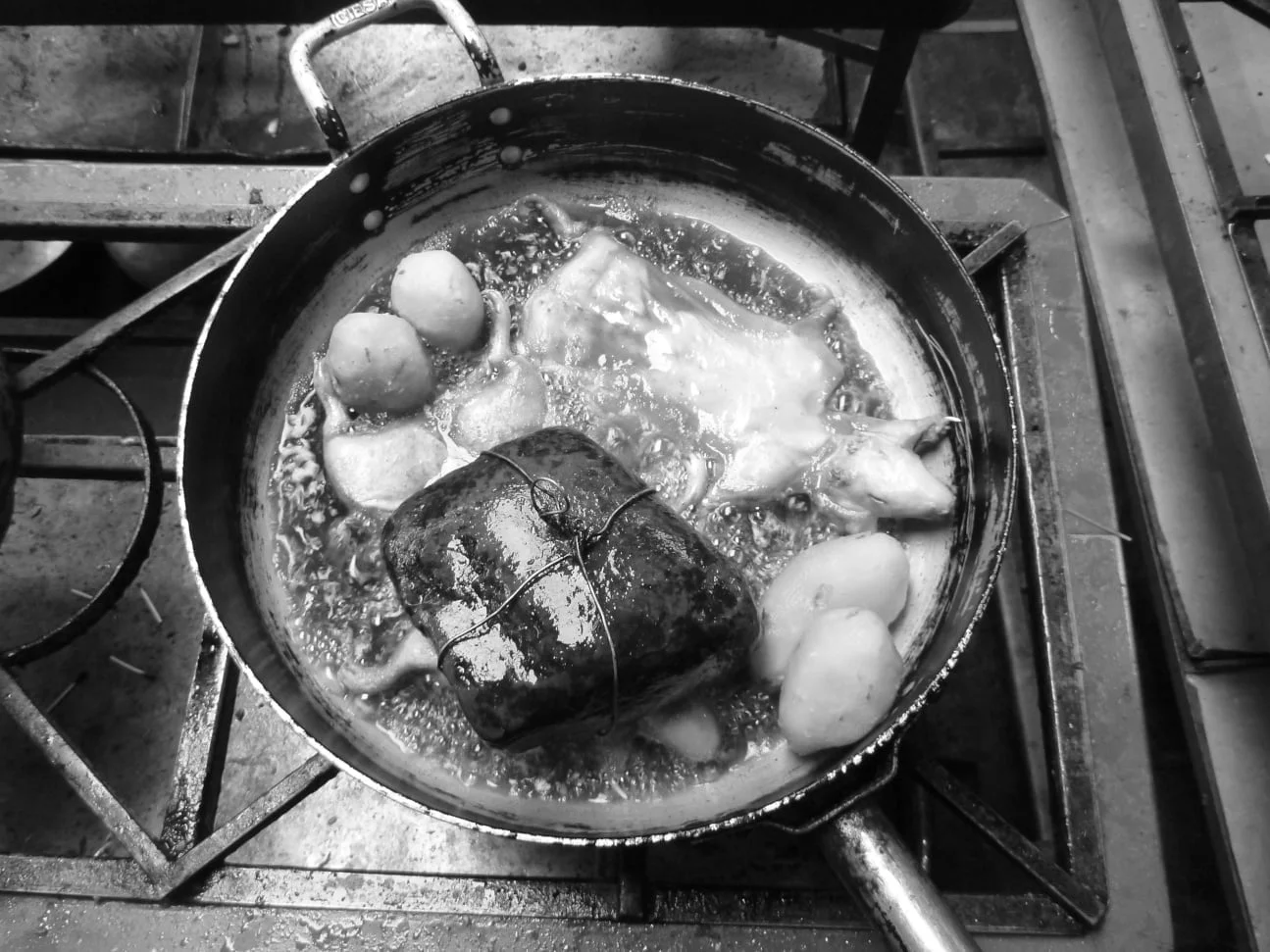
Cuy chactado is a traditional dish in Arequipa – fried guinea pig – although the roasted version known as Cuy al horno is popular too, particularly in the Cusco region. They are usually served with other Andean favorites such as potatoes, and corn.

The Cuy al palo comes with a serving of noodles, boiled potatoes, and a stuffed rocoto (capsicum peppers). Of course there must be hot pepper sauce, the uchucuta, handy.
Among the emblematic dishes based on guinea pigs, are also: the guinea pig marinade, the spicy guinea pig, the enrollado de cuy, guinea pig consommé, the piscuy, the guinea pig in the Chinese box and even cuy icecream.
A stick is run lengthwise through the body, and it is either, broiled rotisserie-fashion over a charcoal fire or cooked on hot stones in the indigenous manner.
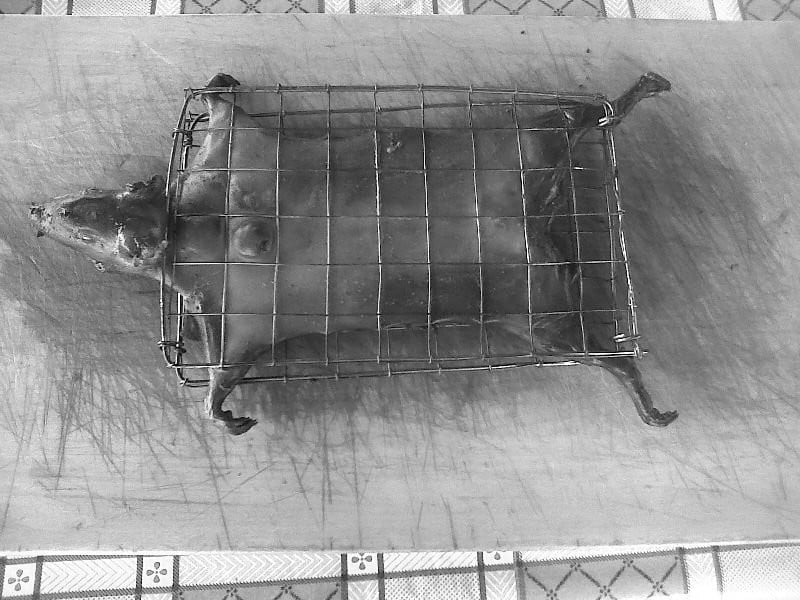
Another manner of preparation is to fry pieces of cuy in lard and add potatoes, onions, and capsicum peppers to make a stew; this dish, known as corina, may not be preconquest.
The boiled tripe of cuy (hipilla) is also popular as a food, usually with potatoes in a soup. Except for an occasional egg, cuy meat is often the only source of animal protein available to the Andean people.
The guinea pig is eaten fried, roasted or in stews. The most typical recipes are: Fried guinea pig with spicy potatoes, Cuy Chactado – frying an entire guinea pig, Cuy al horno – Baked guinea pig, Spicy guinea pig and the chifero Chi Jau Cuy.
Arequipa, Tacna y Moquegua have the cuy “chactado”, puca picante in Ayacucho, cuy frito in Cajamarca or cuy colorado in Junín. En pepián or al horno in Cusco, apanado (breaded) in Apurimac…
Many of the methods of preparing the animal are similar, it is most commonly roasted (cuy canca). Erwin told us: The neck is broken, then the animal is put into boiling water to remove the fur. Next the abdomen is opened and the viscera are removed, and the cuy is stuffed with herbs like mint and Huacatay (Tagetes).
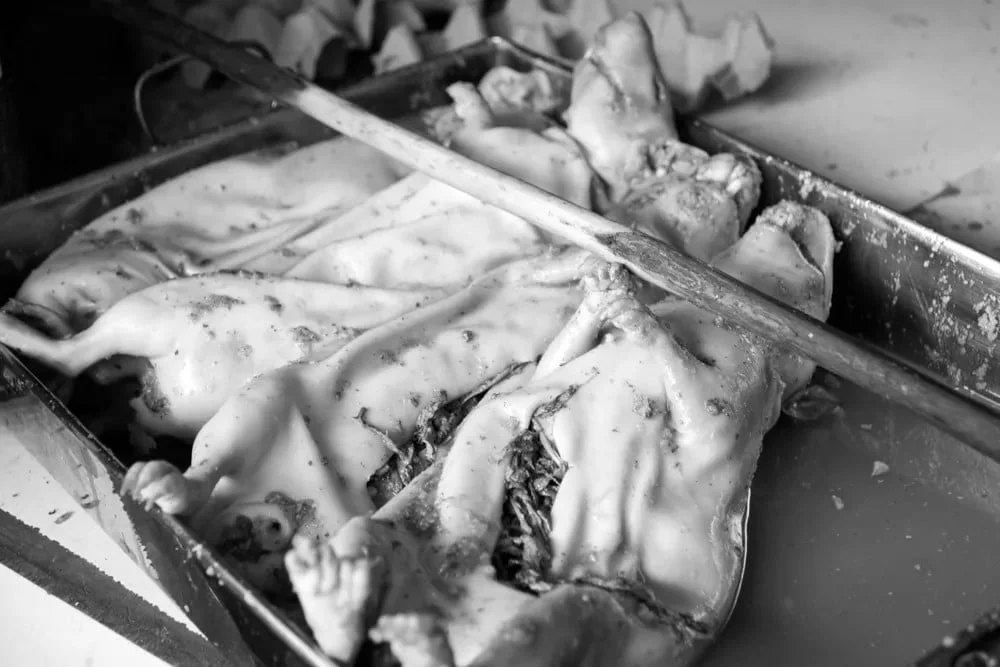
Fusion food in Peru Novoandina cuisine
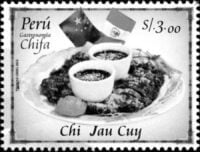
Peru is a melting pot of cultures and heritage, and the food here is no exception. The country has a long culinary tradition from the Andes and coastal regions, which has come together with techniques and styles brought from other countries Japanese, Chinese, Italian, French, African and Spanish people disembark in the coastal regions and spread to the rest of the country. With them, they brought a number of deeply entrenched eating habits, recipes and customs. Trying to hold on to their roots whilst making the necessary compromises due to the produce available in the country.
Chifa (derived from mandarin”chi – fan” meaning, eat rice) is a fusion of Peruvian and Chinese cuisines, brought to Peru by the influx of East Asian immigrants in the late 19th and early 20th centuries. Chifa restaurants serve typical Chinese food made with South American ingredients such as cuy, pineapple and aji amarillo (a paste made from Peruvian yellow chili peppers).
The guinea pig is part of the New Andean cuisine or Novoandina cuisine and is entering gourmet cuisine with force.
Fine dinning Cuy
Cuy has been elevated in recent years from “peasant” food into haute cuisine — as part of a culinary heritage. As we experienced firsthand on our visit to Peru, guinea pig is now a highlight of the tasting menus of Maido, Astrid & Gastón (no cuy when we eate there) and Central, recognized as some of the best restaurants not only in Lima but in the world.
In 2012, Peru was named the World’s Leading Culinary Destination by the World Travel Awards, a title it has continued to receive every year since, and Lima holds the first spots on the Best Restaurants in Latin America list.
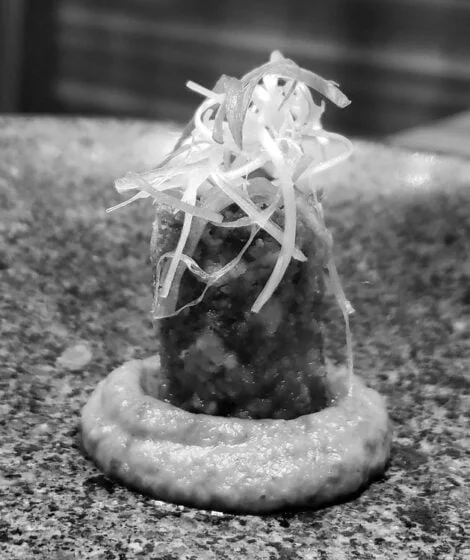
At Maido, Mitsuharu Tsumura prepares Japanese-Peruvian fusion, known as Nikkei, with dishes like sea urchin rice and a riff on cau cau stew that swaps the usual tripe for sea snail. On their website they state:
Thus was born Peruvian Nikkei cuisine: from a complex history and heritage called Peru; and another, equally complex, far-off and foreign history and heritage called Japan that merged to live in harmony and create the third reality: Nikkei Cuisine.
We ate the Cuy San and the sea snail.
In 2013, Astrid & Gastón scored the top spot on the inaugural Best Restaurants in Latin America list by World’s 50 Best, a list it has since remained on. Food, wine and atmosphere where lovely and the Fiesta de Cuy a delight.
“I wanted to prove to our people that we weren’t condemned to imitate others “cultures, others” cuisines – we have a beautiful cuisine that deserves to be celebrated around the world,”
says Gastón Acurio – from Astrid & Gastón.
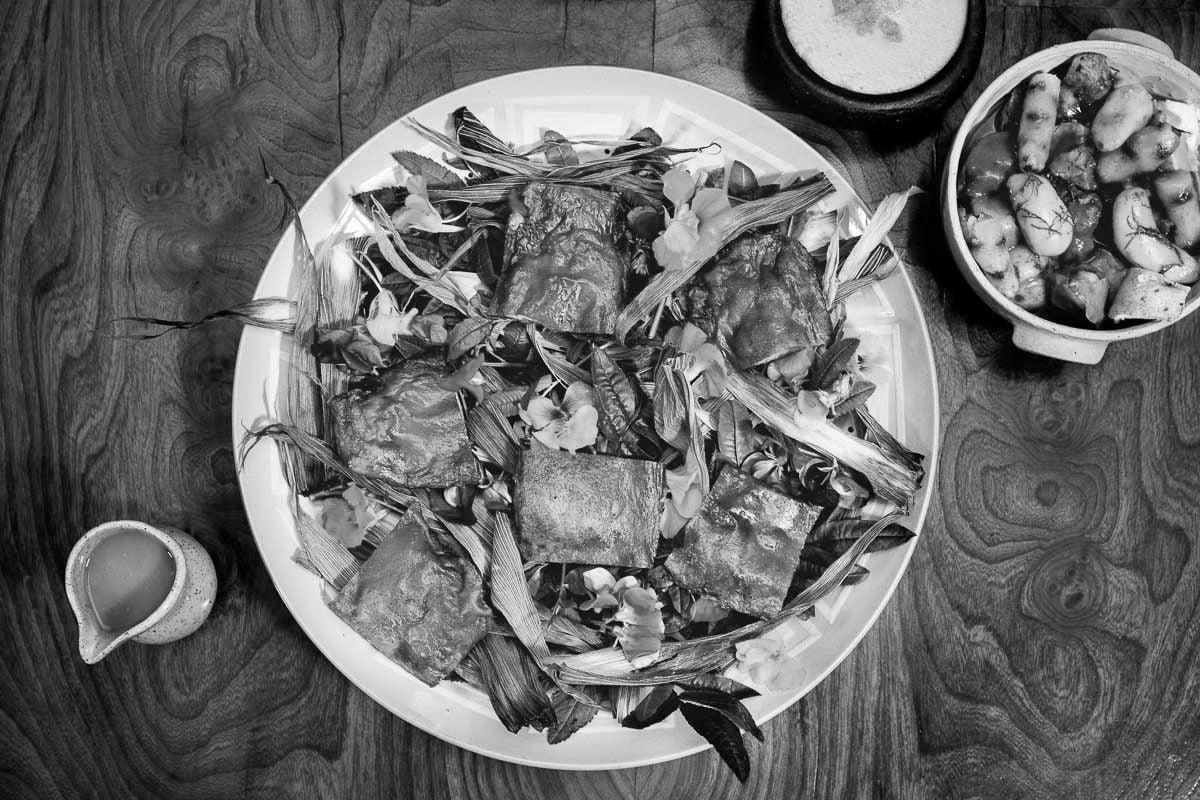
At Central restaurante we went through a tasting menu that features ingredients found at different altitudes in Peru, from 10 meters, or 65 feet below sea level to more than 3750m, or 13,000 feet above, with a spotlight on heritage plants, herbs, and fruits that we have never heard of. Each dish uses endemic ingredients cultivated at a set elevation.
Conscious of our lack of connectivity, we wish to humbly take on the great challenge of discovering and, in some cases, rediscovering this beautiful country, replete with unique foods, landscapes, cultures, traditions, and history. Above all we wish to connect with the individuals who live here and convey their stories.
earthstoriez
The collaborative team at Central works hard to create links between humans, nature and culture, and strives to highlight those elusive elements that few people see in their daily lives.
“When I go to the mountains and to the Amazon, I speak to people, I get to understand a little bit how people used to live thousands of years ago … And for me, those stories, they have lots of value and they are very meaningful. Probably that’s why I love to cook.”says Virgilio Martínez of Central Restaurante, Lima. Martínez formed Mater Iniciativa, a research center, documenting Peru’s bountiful produce and experimenting with nature’s gifts to discover culinary uses.
Ethnobotany: Wakatay or Huacatay
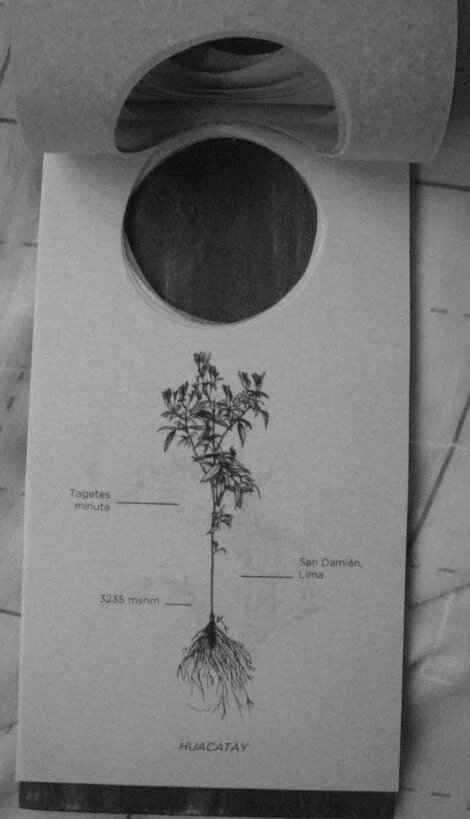
We did not eat Cuy, but at Centralrestaurante we tasted Wakatay or Huacatay, a herb Erwin told us, near Macchu Piccu, is best eaten with Cuy.
There is a mysterious green salsa, with a unique mint-like flavor that can be difficult to identify. The secret ingredient in that sauce is the Andean herb known as Huacatay or Wakatay. Huacatay is from the genus Tagete, a strong, aromatic herb from the marigold family. It is grown in the Peruvian Andes but can develop all over South America, like in Argentina, Bolivia, Chile or Paraguay.
Huacatay is pronounced “wah-ka-day” and it’s also known as Peruvian black mint, mint marigold, wild marigold or Mexican marigold.
The Huacatay plant is fairly small with tiny yellow and green flowers and spiky leaves. Its leaves are glossy green, and the leaves and the flowers produce a strong odor as it contains a essential oil.
One of the popular uses for huacatay is in the potato dish known as ocopa where it is used to make the ocopa sauce. It is a smooth sauce that features huacatay as the main ingredient, in addition it includes peanuts and aji chile peppers. Huacatay is essential for the Andean stew called locro and for the Peruvian barbecue known as pachamanca used for meat, like cuy.
Huacatay is also used in a salsa or ceviche. The taste of the Huacatay herb is somewhat a mixture of sweet basil, tarragon, mint and lime.
Health benefits of huacatay
Like most fresh herbs, huacatay is full of important nutrients, such as:
Antioxidants: Huacatay is a source of valuable antioxidants that can prevent oxidative damage and the health problems it causes.
Essential fatty acids: The linoleic and linolenic acids in huacatay essential oil are important for health. These acids help with the body’s absorption of nutrients like vitamins A and D.
Ocimene: Ocimene is a terpene in huacatay that has a variety of health benefits.
Huacatay can be used to treat or prevent health issues like:
Inflammation: As a source of valuable antioxidants, huacatay can help to prevent inflammation.
Colds: One of the herb’s traditional uses is as a treatment for respiratory problems associated with colds.
Intestinal parasites: Huacatay is effective for treating infections by ascarids and hookworms.
Bacterial infections: Ocimene along with other compounds in huacatay essential oil has antibacterial properties. It is able to prevent infections by certain bacteria including Staphylococcus aureus.
Cuy – Guinea pig – HERITAGE– cultural history, mythology, folklore & everyday life
The syncretism of local beliefs with Christianity has not stamped out the use of the cuy for sacrificial offerings, and guimea pigs, together with coca are still offered to the gods. The ritual value of the cuy in Andean folk culture, together with its ease of maintenance, its high rate of reproduction, and the lack of another domesticated animal to fill its niche, explains why the guinea pig has maintained its place in the domestic economy of the people of the Central Andes.
Regardless of whether one would consider eating guinea pig, these creatures provide food for thought for how humans and other animals continue to be entangled in fascinating, fraught, and ever-changing ways.
The long and complex history and heritage of the guinea pig as a food animal will continue to evolve.
disfruta el sabor – enjoy the flavors
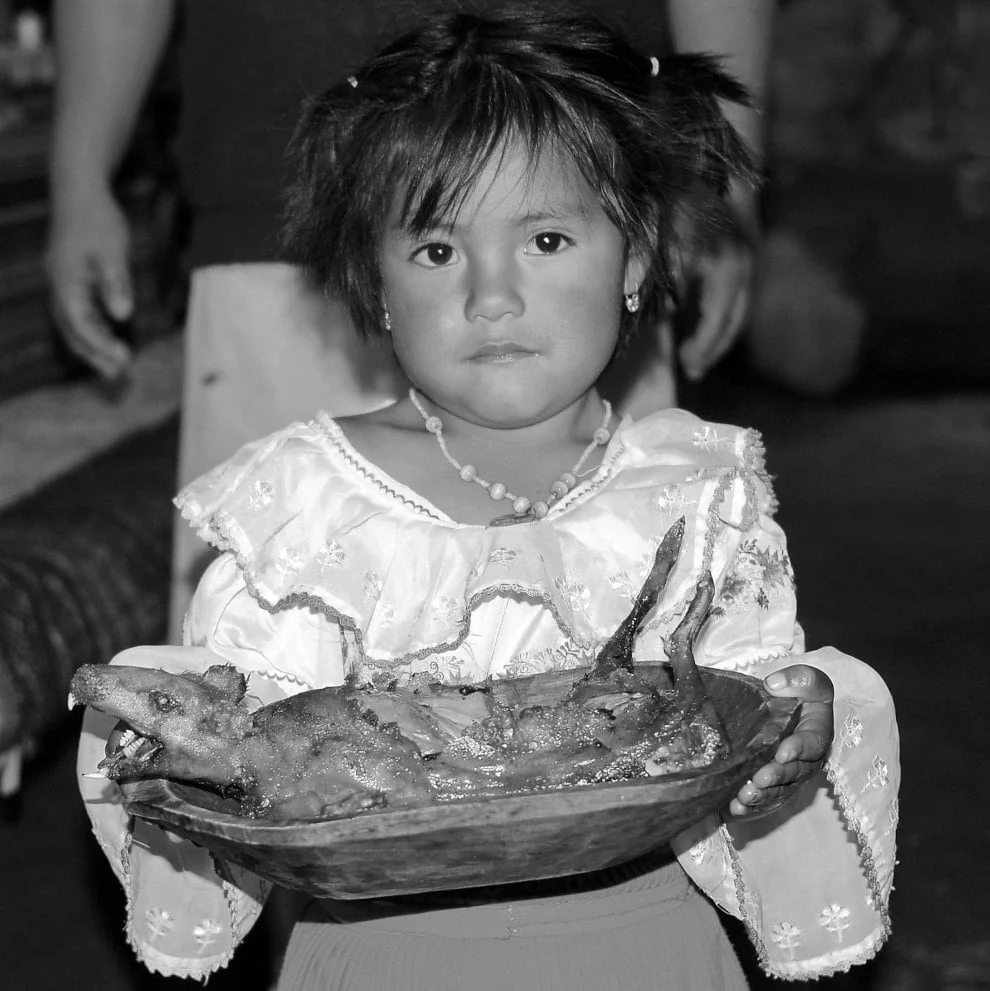
~ ○ ~
Works Cited & Multimedia Sources
- Andrews David Henry – On the ethnozoology of the guinea pig. 1972-1974.
- Archetti Eduardo. The Social and Symbolic World Of Guinea Pigs In the Andes. https://web.archive.org/web/20211204142236/https://thevacuum.org.uk/issues/issues0120/issue04/is04artsocsym.html
- Avilés D. F. Martínez A.M. Landi V. Delgado J.V. El Cuy (Cavia porcellus). Un Recurso Andino de Interés Agroalimentario Guinea Pig. An Andean Resource with Agrifood Interest. 2014.
- Crianza de cuyes nativos en cuatro distritos de la micro region de cangallo. https://crianzadecuyes.com/
- D. deFrance Susan. Guinea Pigs in the Spanish Colonial Andes: Culinary and Ritual Transformations. International Journal of Historical Archaeology. 2020.
- De Ayala, F. G. P. . Nueva corónica y buen gobierno (Vol. 1). Fundación Biblioteca Ayacucho. 1980.
- De Matos Rosalía Avales. Folklore de las Americas. Sobretiro del N° 17 de Folklore Americano. Publicado por el Instituto de Estudios Peruanos. Volumen 6. Lima. 1972.
- Eeckhout Peter. Myths and Ritual Practices at Pachacamac. 2004. https://doi.org/10.4000/bifea.5786
- Encyclopedia of Mythic Narratives, Themes, and Concepts.
- Gade Daniel W. The Guinea Pig in Andean Folk Culture. American Geographical Society. Geographical Review 1967.
- Horkheimer. Hans Nahrung und Nahrungsgewinnung im vorspanischen Peru. 1960.
- https://buenazo.pe/notas/2021/03/29/cuy-historia-cultura-recetas-329
- https://colnect.com/en/stamps/stamp/720059-Chi_Jau_Cuy-Chifa_cooking-Peru
- https://cuzcoeats.com
- https://en.wikipedia.org/wiki/Guinea_pig#History
- https://guide.michelin.com/us/en/article/people/chef-virgilio-martinez-central-restaurante-peru-video
- https://journals.openedition.org/bifea/5786?lang=en#tocto3n3
- https://traditionalmedicineinperuandes.weebly.com/medicinal-practices.html
- https://www.elbrujo.pe/blog/serie-alimentos-andinos-el-cuy
- https://www.etymonline.com/word/guinea%20pig
- https://www.onlyfoods.net/huacatay.html
- https://www.peruinsideout.com/viaje-en-peru-blog/comer-cuy-en-peru.php
- https://www.thefreelibrary.com/The+Guinea+Pig%3a+American+Pet–Andean+Culture+and+Food.-a0250579386
- https://www.veterinariadigital.com/articulos/el-cuy/
- Le Febvre Michelle J. De France Susan D. Guinea Pigs in the Pre-Columbian West Indies. 2014.
- Mayhua, V. Cook, F. in Investiga clones en cuyes. Asociación Peruana de Producción Animal 1976 – 1993. Asociación Latinoamericana de Producción Animal 1968 -1990. 1994.
- Rofes Juan. Sacrificio de cuyes en el Yaral, comunidad prehispánica del extremo sur peruano. Bulletin de l’Institut français d’études andines. 2000.
- Sanchez Montenegro Victor. Biografia esoteríca del cuy. Boletín Cultural y Bibliográfico Biblioteca Luis Ángel Arango. 2019.
- Sandweiss Daniel H. Wing Elizabeth S. Ritual Rodents: The Guinea Pigs of Chincha, Peru. Journal of Field Archaeology, Vol. 24, No. 1. 1997.
- Steele Paul R. Allen Catherine J.. Handbook of Inca Mythology. Handbooks of world Mythology. 2004.
- Van Dalen P. El uso y la importancia del cuy en las sociedades andinas a partir de las evidencias en la provincia de Huaral. Tesis. Lima, Perú. 2020.
- Wheeler Jane. Rofes Juan. The sacrifice of the guinea pigs in the Andes: The case of “El Yaral” and a biological, archeological and ethnographical revision of the Cavia porcellus species. Archaeofauna 2003.
- Weir Barbara. Notes on the Origin of the Domestic Guinea-Pig,”in I. W. Rowlandsand B. J. Weir,eds., The Biology of Hystricomorph Rodents.1974 .
- www.eatperu.com/eating-cuy-guinea-pig-peruvian-delicacy
- www.fao.org/w6562s01
Keep exploring:
